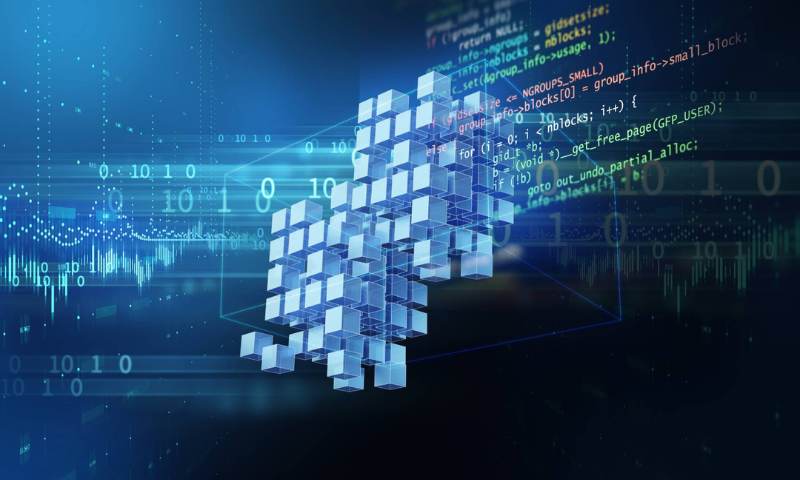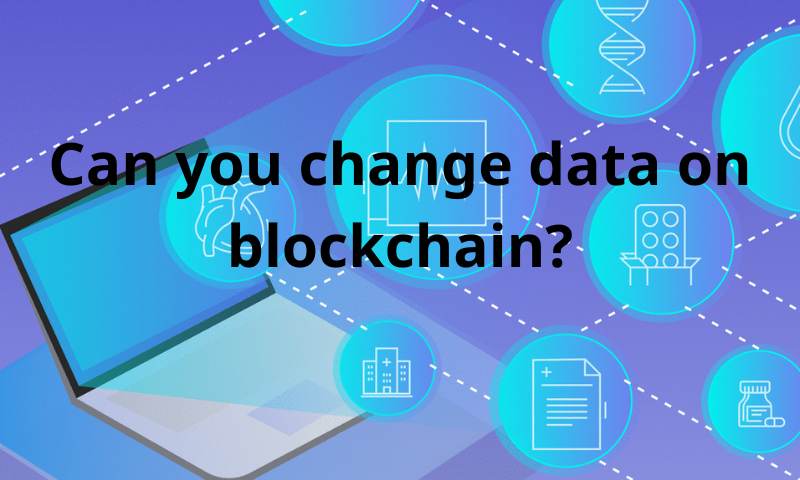Blockchain Transparency: Can You Really Alter the Data?
The trust in blockchain comes from its iron grip on data—it doesn’t budge, or does it? As I dive into the gritty details, a question lingers: Can you change data on blockchain? Stick with me, and you’ll unpack the complexities of a system that’s built to resist change. Sure, the term ‘immutable’ gets thrown around like a hot potato, but how stone-carved is blockchain’s memory, really? Is it a fortress against alterations, or can clever hands craft a backdoor? From the myths to the mechanics, I’ll guide you through the maze where transparency meets transformation. In the buzzing world of tech, even the sturdy blockchain faces tests of flexibility. Let’s break down what ‘unchangeable’ truly means when we take the hammer of inquiry to blockchain’s seemingly unbreakable walls.
Understanding Blockchain’s Immutable Nature
The Concept of Immutability in Distributed Ledgers
Blockchain holds a superpower called data immutability. This means once we put data on a blockchain, it stays put. It’s like writing with a permanent marker on the internet. No one can just erase it. But how? Well, blockchain links together a chain of blocks using math. Each block says, “I trust the block before me.” If someone tried to change a block, the whole chain would know. It’s like dominoes; mess with one, and the rest will fall.
Think of this as a team game where everyone has a copy of the rules. If one player tries to change the rules, the others won’t play along. They trust the rules because they agreed on them from the start. This trust makes blockchains reliable. It’s not just any player; these are computers owned by folks all around the world.
The Realities of Blockchain Modification Possibilities
Now you might be thinking, “but what if I really need to change something?” Reality check: altering blockchain entries is super hard but not impossible. Think of it as a space mission. It can be done, but it’s complicated, needs a lot of agreement, and doesn’t happen often. This is where things like blockchain reorganization and ledger correction mechanisms can come into the picture.
Let’s say there’s a huge mistake that needs fixing. The team – miners and developers – could decide to use these tools. It’s like hitting undo on a huge level, but everyone playing has to agree to it, this is because of something called consensus protocols. These rules keep everyone honest so no one can sneakily change info. It’s a bit like when kids all have to agree on the rules before they start a playground game.
And what about updating information on blockchain? Well, there are things called smart contracts that can help with that. They’re like robot umpires in our game, making sure the rules are followed when scores are updated. They can be programmed to include ways to reverse actions if something goes wrong. But remember, this all requires planning ahead; you can’t just make changes willy-nilly.
So, can hackers edit blockchain? It’s super tough. Blockchains are like fortresses with guards – miners – who use heavy-duty math to keep hackers out. It would take a superhero-level hacker to beat that. Still, no fortress is totally safe. But, blockchain makes it as tricky as it can be. This helps us trust blockchain and the data on it.
We have these ideas called hard forks and soft forks, too. They allow communities to agree on changes if they really need to. A hard fork is like making a whole new game because the old one had problems. A soft fork is like changing one or two rules but still playing the same game. Both are ways to deal with updating things when absolutely needed.
All this tech talk boils down to one thing: Though we can change blockchain data, it’s made to keep our digital data safe and sound. It’s powerful, reliable, and built to resist change – and that’s why it’s so cool.
Mechanisms that Safeguard Blockchain Integrity
How Consensus Protocols Prevent Unauthorized Data Alteration
Blockchain is like a digital ledger book that everyone can see. It’s a list of records that no one can just change whenever they want. The records, once written, are there to stay. But how does blockchain stop people from changing data? It uses special rules called consensus protocols. That’s a techy way of saying everyone in the network agrees on what the records say. And if someone tries to cheat or change the records, the other people won’t agree.
Consensus protocols need most people in the network to confirm a record before it’s set in stone. This makes altering blockchain entries very hard. Think about trying to cheat in a game where everyone is looking. You can’t because they all see you! Blockchain tech works like that. The players in the blockchain game all watch the records. If one tries to change something, the others say “no way!” So the data stays safe and the same.
The Role of Smart Contracts in Data Modification
Now, what if rules were written in code and the blockchain could enforce them on its own? That’s what smart contracts do. They make promises into code. It’s like a vending machine. You put money in and get a snack without a person helping. Smart contracts make deals happen without a middleman.
Smart contracts can also help with editing records on blockchain. But, it’s not easy. The rules of the smart contract must say it’s okay to change data. And even then, it’s tricky. Changing data goes against the idea of blockchain. This is because blockchains should keep data the same forever — that’s called data immutability. But when a change is okay, smart contracts make sure it’s done right and everyone knows.
Smart contracts are very strict. If a smart contract allows data changes, it’s for a good reason and everyone agreed to it from the start. This might happen if there’s a mistake or something new that was not planned for. The smart contract checks to make sure the change matches the rules. If it does, the change can happen. If not, the contract blocks it.
So, blockchain keeps things honest with consensus protocols and smart contracts. They work together to lock down the data. This way, tampering with a blockchain is tough. It’s a system that holds its ground and doesn’t let cheats play the game. This makes people trust blockchain because they know it’s fair and plays by the rules.
In the world of blockchain, trust is key. And these mechanisms make sure trust is built in from the start. They keep our digital ledger book neat, tidy, and reliable. So when you think blockchain, think of a strong safe that’s hard to crack.
Cases and Conditions Allowing Blockchain Alteration
Blockchain Reorganization and Rollback Processes
In the world of blockchain, changing data isn’t a walk in the park. It’s tough. Blockchains are meant to be set in stone. But, there are rare cases when changes can happen. It’s when everyone agrees that something’s off. Imagine everyone’s rowing a boat in one way, then decides to switch directions. That’s like a blockchain reorganization. Or, when you hit a wrong note and start the song again – that’s a rollback.
Hard Forks vs. Soft Forks: Methods for Data Update
Now, in the simple words, think of forks like a road split. Hard forks and soft forks are two paths for fixing things on a blockchain. A hard fork is a big change that makes new rules. It’s like building a new road because the old one doesn’t work for everyone anymore. But not all want to take the new road, which can split the community.
A soft fork is more like a small detour on the same road. Only some changes are made, but everyone can still drive along together. It’s not as drastic as a hard fork, and in most cases, people don’t even notice.
But let’s dive deeper. This process isn’t random; it’s careful and thought-out. Say there’s a mistake in the records or a big security worry. A whole bunch of people, called miners, use their computers to agree on changing the history of transactions. That’s what we call consent in blockchain. Everyone must see eye to eye to reorganize or roll back the chain. Now, if a big cheat is found, or a massive bug – then a rollback can happen. It’s like hitting a big undo button with everyone’s ok.
The immutable nature of blockchain is its superpower, but just like comic heroes, it has its kryptonite. Under very special cases, even the most solid records might need an edit. Like when there’s a clear error that could hurt people’s trust in the whole system. That’s when miners and developers can use their tech skills to fix things up. The goal is always keeping the ledger honest and clean.
And what about smart contracts? Can they be changed too? They’re tough cookies as well, with rules written in digital stone. But sometimes they can have, what we call, a backdoor to allow for changes if everyone agrees. Or use a new contract that starts fresh, leaving the old one behind but keeping its lessons in mind.
In all these cases, one thing’s clear. Blockchain is all about being open and keeping everyone in the know. It’s like a glass bank vault. You can see everything and changing something big has to be open for all to see – that’s blockchain transparency for you. So, while editing records on blockchain isn’t common, with the right reasons and the right crowd, some updates can be made. But it’s not like your regular word document that you can change willy-nilly. Think of it more like carving into stone; possible, but with great effort and for good reason.
Ethical and Technical Implications of Editing Blockchain Data
Trust and Transparency in Decentralized Ledger Revisability
Can we edit data on a blockchain? In short, no, we usually cannot. Blockchain was meant to last. It stores data in a way you can’t change. The trust in blockchain comes from this. When a record goes in, it stays put. This locks in data forever. We call this, “data immutality in distributed ledgers.”
Yet, sometimes mistakes need fixing. Can we do that on blockchain? Smart contracts help here. They allow certain changes if all agree. This is how we keep the blockchain honest. Even with this, edits are rare and hard to make. Remember, it’s about keeping trust.
Ledger Correction Mechanisms and Correcting Blockchain Misinformation
Now, can a blockchain correct wrong data? This is tough. Blockchain keeps data as is, mistakes and all. But, there’s a way. Think of a train track switch. “Blockchain reorganization” is like this. It reroutes the chain from a point.
But, reorganizing isn’t easy. It takes a lot of power and agreement. You need most users to agree on it. Often, it’s in the form of “forks.” These are changes in the code that alter the chain’s direction. We have “hard forks” and “soft forks” here. Hard forks split the chain. Soft forks just tweak the rules.
Let’s not forget the core of blockchain: “consensus protocols.” They keep the chain safe from bad changes. Only through these rules can any edit happen.
What if someone tries to mess with the data? “Mining consensus” helps prevent this. They check the blocks and agree before any change. If they don’t, the blockchain won’t accept the edit.
Understanding all this is key. If we can edit a blockchain, it’s under strict conditions. It’s often to correct a serious problem. Like when there’s a bug or a hack. Still, we avoid edits to not break trust.
Blockchain keeps our data safe and secure. It’s a digital ledger that’s tough to change, and that’s mostly a good thing. It means when you see something on blockchain, you can trust it’s true. It’s what makes blockchain special. And it’s why so many rely on it for their work.
In this post, we dove into blockchain and its rock-solid nature. You learned why it’s tough to change data on this digital ledger. We explored how consensus rules and smart contracts keep the blockchain honest. We also looked at rare cases where changes are possible, like with rollbacks and forks. And we touched on the big questions of trust and truth when blockchains get fixed.
My final thoughts? The strength of blockchain comes from its clear rules and smart design which protect our trust. Even when edits are needed, the system’s transparent. This ensures that we always know the score. Keep these things in mind as you think about blockchain’s role in tech and beyond. Blockchains aren’t perfect, but they sure are close. And that’s what makes them a game-changer.
Q&A :
Can data on a blockchain be altered or rewritten?
While blockchain technology is renowned for its security and immutability, changing data on a blockchain isn’t straightforward. Generally, once a transaction is added to a blockchain, it cannot be altered. This immutability is a key feature, as it provides trust in the transaction history. However, in particular situations with consensus from the majority of the network participants, such as a ‘hard fork,’ changes can be made, though this is not a common practice for most blockchains.
What happens if incorrect data is entered into a blockchain?
If incorrect data is entered into a blockchain, it typically cannot be directly edited or removed, due to blockchain’s inherent design for immutability. The common remedy is to enter a new transaction that corrects or reverses the earlier error, with both transactions being visible on the ledger. The aim is to be transparent about the mistake and its rectification.
Is it possible to delete information from a blockchain?
Deleting information from a traditional blockchain is not possible as each block contains a cryptographic hash of the previous block, creating a linked chain that secures the information. However, some modern blockchain solutions may offer methods to ‘prune’ certain data or employ systems like zero-knowledge proofs to manage data privacy, while still retaining the integrity of the chain.
How does blockchain ensure data accuracy and integrity?
Blockchain ensures data accuracy and integrity through the use of cryptographic hashes, a consensus mechanism, and a distributed ledger. Each block contains a unique hash, any alteration to the block’s data invalidates this hash, and all subsequent blocks. Thus, any attempt to alter data would require immense computing power to recalculate every hash and achieve consensus, which is impracticable on a large, active blockchain.
Can blockchain technology be hacked or compromised?
Despite blockchain’s design for security, it is not completely invulnerable. Theoretical vulnerabilities could occur through a 51% attack, where an entity gains control of more than 50% of the network’s mining hashrate, potentially allowing them to double-spend coins, prevent confirmations, or even reverse transactions. However, such attacks are extremely complex and are more theoretical concerns for large, well-established blockchains. Smaller networks with less distributed control are generally more at risk.


